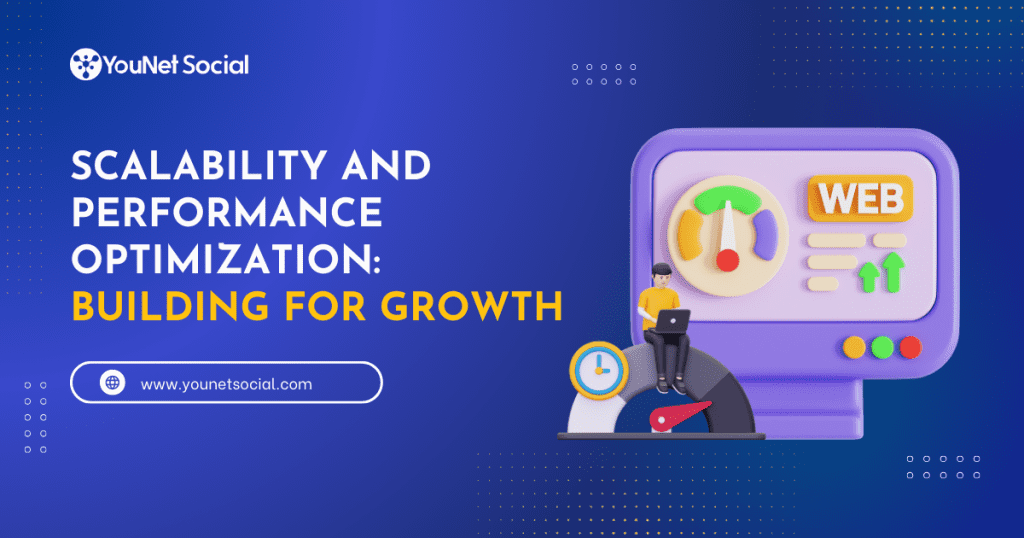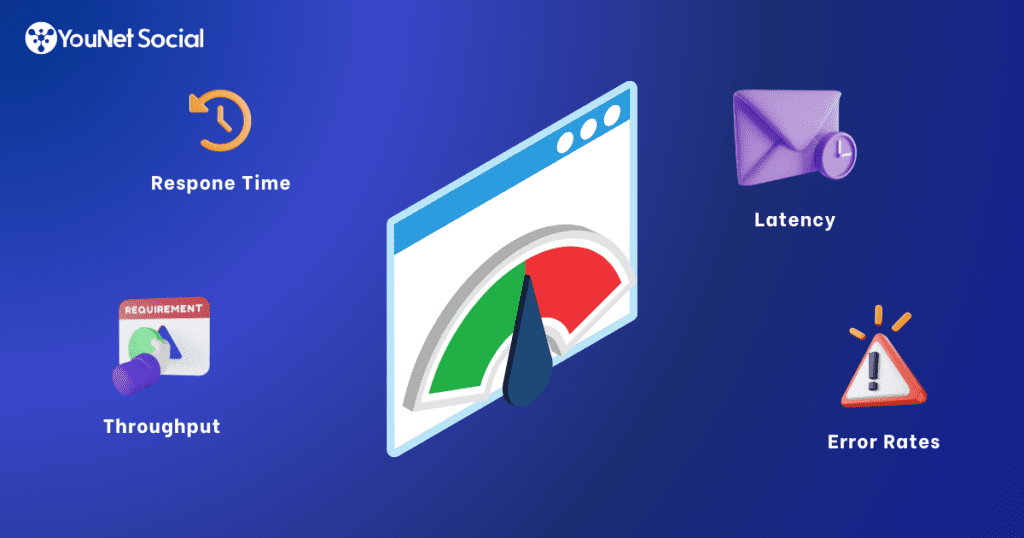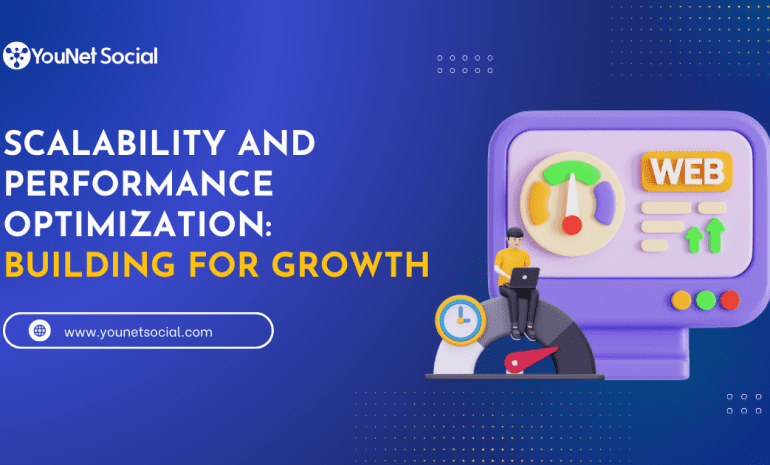
In the ever-evolving realm of technology, businesses and organizations face a relentless demand for digital services. Whether you’re running an e-commerce website, a cloud-based SaaS platform, or a mobile app, the ability to seamlessly handle increased user loads and ensure top-notch performance is a top priority for success. In this blog post, we will explore the concepts of scalability and performance optimization, why they matter, and how you can achieve them effectively.
Understanding Scalability
Scalability refers to the capacity of a system to handle a growing amount of work or its potential to accommodate that growth. It’s all about ensuring that your system can adapt and function efficiently as your user base expands or your data processing requirements increase. There are two primary types of scalability that you can have for your platform:
Vertical Scalability: This involves increasing the power of an individual machine, such as upgrading the CPU, RAM, or storage. While it can provide short-term relief, it has limits and is often more expensive.
Horizontal Scalability: You add more machines or nodes to your system, distributing the load across multiple instances. It is the preferred approach for building highly scalable systems because it offers flexibility and cost-effectiveness.
Why Scalability Matters
Scalability is critical for the operation, leading to your platform’s success. A scalable system will meet the increasing demands of users and ensure it runs smoothly under the high traffic load in case your application goes viral or experiences sudden popularity. Besides, horizontal scalability allows you to add resources as needed, reducing the need for over-provisioning, optimizing, and saving your budget when developing the system. As your business grows, scalability ensures your infrastructure can grow, preventing costly overhauls.
Scalability Challenges
Bottlenecks and Constraints
Regarding scalability, bottlenecks are like traffic jams in a busy city. They are points within your system where the flow of data or processes becomes severely restricted, causing delays and performance degradation. Identifying and addressing these bottlenecks is crucial for maintaining the overall health and efficiency of your application or infrastructure. Bottlenecks can manifest in various forms, such as CPU bound, memory bound, I/O bound, and database bottlenecks.
Load Balancing Issues
Load balancing is a critical aspect of ensuring the scalability of your system. It involves distributing incoming traffic or requests evenly across multiple servers or nodes. The goal is to prevent any resource from overloading, ensuring your system remains responsive and available even during high-demand periods.
Strategies for Scalability
Design Principles for Scalability
- Stateless vs. Stateful Architectures: Stateless architectures are easier to scale since they don’t rely on session data. Stateful architectures require careful management to scale effectively.
- Microservices and Service-Oriented Architecture: Breaking your application into smaller, independent services makes it easier to scale each component independently.
- Caching and Content Delivery Networks (CDNs): Use caching to store frequently accessed data and leverage CDNs for delivering content closer to users.
Scaling Databases
- Sharding: Divide your data into smaller, manageable partitions and distribute them across multiple database servers.
- Replication: Maintain numerous database copies for redundancy and read scaling.
- NoSQL vs. SQL databases: Choose the right technology based on your scalability needs.
Load Balancing
Implement load balancers to distribute incoming traffic across multiple servers or instances. This ensures high availability and improves performance and response times to prevent overloading, making for a seamless user experience.
Cloud Scalability
- Autoscaling: Automatically adjust resources based on demand.
- Serverless Architecture: Eliminate the need for managing infrastructure altogether.
Performance Optimization
Performance optimization is to improve your application or system’s speed, responsiveness, and efficiency. It’s about ensuring your software runs smoothly and provides a seamless user experience.
The Business Impact of Performance Optimization
Performance optimization is not just a technical concern; it directly impacts your business in several ways:
- User Satisfaction: Customers now consider the quality of their experience in a platform, and faster applications lead to happier users and lower bounce rates. Besides, the need for responsiveness is also high to the demands of users.
- SEO Ranking: Google considers page speed a ranking factor, so faster websites can improve your search engine rankings. This helps raise your brand awareness on the Internet.
- Cost Reduction: Optimized applications can consume fewer resources, reducing operational costs.
Performance Metrics and KPIs

You need to measure performance using metrics and KPIs tools to optimize performance. You can define key performance metrics and KPIs below:
- Response Time: How quickly your system responds to user requests.
- Throughput: The number of requests or transactions your system can handle per unit of time.
- Latency: The delay between a request and a response.
- Error Rates: The frequency of errors or failed submissions.
Techniques for Performance Optimization
Code-Level Optimization
- Profiling and Benchmarking: Identify performance bottlenecks in your code and optimize them.
- Algorithm Efficiency: Use efficient algorithms and data structures to improve processing speed.
- Resource Management: Properly manage resources like memory and connections to prevent leaks.
Front-End Optimization
- Minification and Compression: Reduce the size of CSS and JavaScript files to minimize page load times.
- Content Delivery: Use CDNs to serve static assets from servers closer to your users.
Back-End Optimization
- Database Indexing: Create proper indexes to speed up database queries.
- Caching Strategies: Implement caching mechanisms to store frequently accessed data.
- Asynchronous Processing: Use asynchronous tasks to offload time-consuming operations and improve responsiveness.
Monitoring and Tuning
- Real-time Performance Monitoring: Continuously monitor your application’s performance and respond to issues promptly.
- A/B Testing for Optimization: Test different optimizations to determine which ones have the most significant impact.
The Relationship between Scalability and Performance
Understanding the relationship between Scalability and Performance is crucial for the businesses’ strategies and operations for building a robust and efficient system.
Scalability Enables Performance
Scalability is the foundation upon which optimal performance can be achieved. When a system is scalable, it means it can handle increased workloads and demands. Scalable systems can adapt and grow, allowing them to perform well even as more users access the application or the workload becomes more resource-intensive.
Scalability Supports Load Handling
As the user base or the volume of data and requests grows, an application’s performance can deteriorate if it is not designed to scale. Scalable systems, however, can seamlessly distribute the increased load across multiple servers or resources, preventing overloading of any single component.
Performance Optimization Enhances Scalability
While scalability ensures a system can handle increased load, performance optimization focuses on making the system operate efficiently even under typical conditions. Optimizing performance involves minimizing response times, reducing latency, and maximizing the throughput of a system.
The combination of performance optimization and scalability means the system is capable of handling more load and can do so efficiently. This efficiency is critical because it ensures that the resources are used effectively, reducing operational costs and preventing resource bottlenecks.
Scalability and Performance Are Interdependent
Scalability and performance are not isolated concepts; they are interdependent. A scalable system that could be better optimized for performance may still encounter bottlenecks and experience sluggish response times when the load increases.
Conversely, a highly optimized system with limited scalability may perform well under normal conditions but struggle with unexpected traffic or data volume surges.
Continuous Monitoring and Improvement
Maintaining the delicate balance between scalability and performance is ongoing. As your system evolves and user demands change, you must continuously monitor and adapt to ensure scalability and performance remain at desired levels.
Business Impact
The relationship between scalability and performance directly impacts the success of a digital service or application. A system that can efficiently scale while maintaining excellent performance is more likely to attract and retain users, achieve higher customer satisfaction, and support business growth.
Conclusion
Scalability and performance optimization are not optional but imperative for success. By understanding the principles, strategies, and techniques, you can ensure your applications are well-prepared to handle growth and deliver exceptional performance. Continuously monitoring, measuring, and optimizing your systems will keep your users satisfied and your business thriving.
At YouNet Social, we provide Scaling and Web Performance Management services for customers who are businesses, organizations, or individuals to manage their platforms efficiently. With our latest technologies, we are confident that your platform will handle well under any unexpected situations. If you have any requirements about these services or other questions, contact us for more information. We are happy to support you with your problems.
Read more: Open-source Software: The Heart of Tech Innovation


Leave a Reply